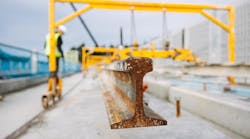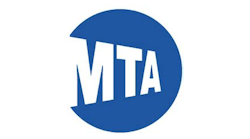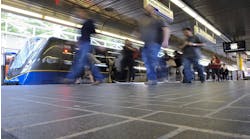The announcement by the New York Metropolitan Transportation Authority (MTA) concerning award of the $182 million contract for relocation of underground utilities prior to initiation of future construction of the 106th St. Station that is part of the extension of MTA's Second Avenue Subway doesn't tell the whole story. It is the equivalent of taking a first bite ($182 million) of your salad as part of a ($7.7 billion) seven-course meal. This comes three months after the Federal Transit Administration (FTA) awarded a $7.7 billion ($4.3 billion federal and $4.4 billion local share) Capital Investment Grant New Starts Full Funding Grant Agreement.
The winning vendor, C.A.C Industries, scope of work includes relocation of electrical, sewer, telecommunications, water and other underground utilities on Second Avenue between East 105th St. to East 110th St. Some of these assets could easily be between 50 to 100 years old. This work must be completed prior to the start of construction for the 106th St. Station. The contractor will not know what they will find. This could result in unforseen underground site conditions, which may require contract change orders costing milllons more. A final cost will not be determined until 100 percemt of the work is complete..
The delay in opening and the eventual award of a contract worth several hundred million dollars to a Construction Management Engineering firm from November 2023 to February 2024 is critical. Assuming this contract is awarded in March, it could result in the overall project falling behind schedule by four months. The CM firm provides significant technical assistance to MTA's own project managers and engineers in providing oversight over all the other project contractors. This is to help ensure that all construction and construction related activities stay on schedule, within budget and are built to contract specifications.
Virtually all of the other professional service contracts worth $891 million should be awarded prior to most other contracts. These include $3.4 billion for stations, along with several billion more to pay for tunneling, track, power, third rail, drainage and other significant construction activities.
Promises by the MTA that more efficient station designs could reduce the overall project cost by $300 millions may not hold water based upon past history. There is no way to know today what the final price tag will be for construction of all three new stations. The MTA must first advertise, respond to bidders questions, receive and open bids, followed by contract award. There are always contract change orders during construction adding to costs.
In April 2019, the MTA Office of Capital Construction President Janno Lieber claimed the MTA could save between $500 million to a $1 billion in costs for the proposed Second Avenue Subway Phase 2. This would have reduced the overall tab down to almost $5 billion. Promised cost savings were based upon reduction in excavation for the 125th St. Station and building the 116th St. Station in space no longer needed for other project work. Fast forward to February 2022, and instead the cost increased to $6.9 billion. In 2023, the cost grew to $7,7 billion.
The MTA lacks credibility when it comes to promised cost savings. Transparency for advancement of this project is required on the part of New York Gov. Kathy Hochul. MTA Chairman Janno Lieber, MTA Office of Capital Construction Jamie Torres-Springer and New York City Transit President Richard Davey.
Will they share the FTA Independent Project Management Oversight (PMO) Engineering consultant monthly progress report on Second Avenue Subway Phase 2 with all 15 MTA Board members, commuters, taxpayers, transit advocates, transportation reporters and elected officials?
Using the FTA TrAMS System, the MTA, provides updated Quarterly Financial and Milestone Progress Reports to the FTA on grants funding Second Avenue Subway Phase 2. These are required to be submitted within 30 days after the fiscal quarter has started on the first of the month and ends on the last day the third month. Federal fiscal quarters are October through December, Januay through March, April through June and July through September.
Information contained includes updated budget and milestones. Explanations for project delays and change orders for more than $100,000 are provided. Project delays require recovery schedules and revised interim milestones to document future completion. Financial draw downs against open grants illustrate if funds are being expended on a timely basis.
The MTA could easily post all of this information on its website. Why should anyone interested in understanding how their tax dollars are being spent have to file a Fredom Of Information Act (FOIA) request with either the MTA or FTA to obtain this information? Both agencies FOIA request process can take from several weeks to months before receiving a response. In some cases, significant information is redacted.







